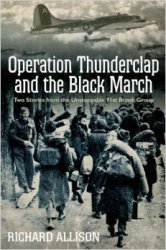The surrenders of Germany and Japan in the spring and late summer of 1945 marked the beginning of the demobilization of the massive military and industrial machine that the United States had assembled to fight World War II. The demobilization of the armed forces proceeded at a rapid pace. During the two-year period from June 1945 to June 1947, the number of military personnel dropped from 12 million to 1.5 million.
Almost immediately after V-J Day in mid-August 1945, and weeks before Japan’s formal surrender in early September aboard the USS Missouri, pressure began to mount to reduce the size of the armed services and to reconvert the nation’s industry to peacetime production. Within a few months, disgruntled U. S. servicemen stationed overseas were protesting for Washington to bring them home so they could get on with their lives, especially to take civilian jobs and raise families. Idle and bored GIs in Manila booed top brass during one demonstration. Others, who were fed up with regulations and regimentation, protested in Frankfurt and also in Paris, where they marched down the Champs Elysees and yelled “scab” and “slacker” at American soldiers who refused to join the march. Some even purchased advertising space in American newspapers to voice their demands. Many civilians joined the protests, organizing into clubs and petitioning Washington for the immediate release of their husbands, sons, and loved ones from active duty.
The pressure at home and abroad forced the military to scrap its plans for an orderly partial demobilization. Originally the War Department had planned discharges based on a point system that recognized the length and difficulty of service. The department, however, decided to release all men with two years’ service. U. S. Army Chief of Staff Dwight D. Eisenhower soon ordered his commanders to return home any men “for whom there is no military need.”
The demobilization of U. S. forces proceeded at an alarming rate, one that President Truman admitted amounted virtually to a “disintegration.” Soon after Japan’s surrender, the president announced that the army and the U. S. Army Air Forces would be cut to 1.95 million by June 1946. By spring 1946, he had further reduced the number to one million as of July 1946. The U. S. Navy was reduced to less than 500,000 by 1947, the U. S. Marines to less than 100,000. Along with the release of service members came training camp closures and the destruction and sale to private industry of ships and unneeded war equipment. The hasty discharge of seasoned specialists and combat veterans particularly damaged military readiness. Because of global instability, and at the president’s request, Congress extended the Selective Service Act to March 31, 1947.
The war’s sudden end caught the Truman administration unprepared for peace and without a plan for confronting changing and potentially volatile domestic and global situations. Fears that the rapid demobilization and RECONVERSION would disrupt the economy and perhaps mean a return to depression conditions proved unfounded. Wartime savings, quick reconversion, pent-up demand for consumer goods, the return of many women to the home from industry jobs, and the 1944 GI Bill of Rights that sent many veterans to college kept unemployment low and the economy strong.
In foreign affairs, the president’s immediate problem was twofold. He had to find a way to maintain a military force sufficient both for the occupation of Germany and Japan and for ensuring global stability and national security. Balancing these requirements proved difficult, especially considering public pressure and Truman’s tight fiscal policies.
Compounding his task was residual, although hardly dominant, isolationist sentiment in Congress. Believing that air power and the exclusive possession of the atomic bomb would ensure the nation’s security, some conservative lawmakers wanted the president to leave the world’s problems to the United Nations. Taking this approach, they believed, would require only limited U. S. military participation. Their sentiments changed, however, as tensions between the United States and Soviet Union intensified in mid - and late 1940s. The reduction of military strength finally ended with the outbreak of war in Korea in June 1950.
Although Americans did not realize it at the time, a good deal of the regimentation and wartime way of life that had developed with the mobilization for World War II would not completely disappear with the end of the war. During the next few years, policymakers would find themselves having to come to grips with exactly how much of the wartime apparatus and system of doing things they should retain in order to confront new postwar problems.
Further reading: Jack S. Ballard, The Shock of Peace: Military and Economic Demobilization after World War II (Washington, D. C.: University Press of America, 1983); James M. Gerhardt, The Draft and Public Policy: Issues in Military Manpower Procurement, I94S-I970 (Columbus: Ohio State University Press, 1971); John C. Sparrow, History of Personnel Demobilization in the United States Army (Washington, D. C.: Center of Military History, 1994).
—Edwin D. Miller




 World History
World History









